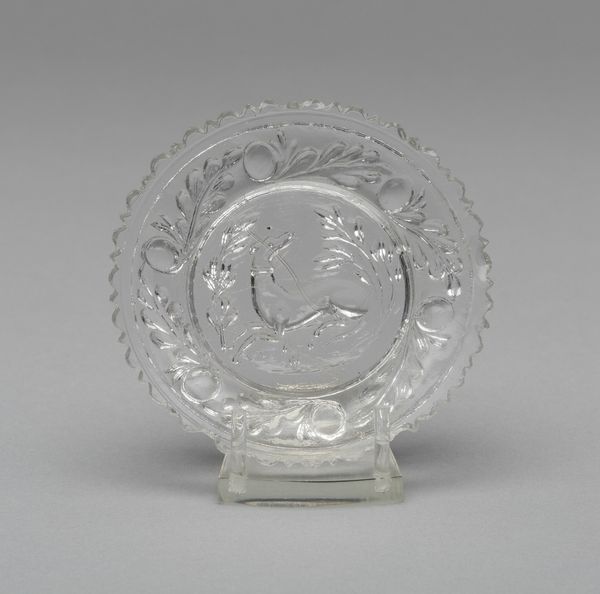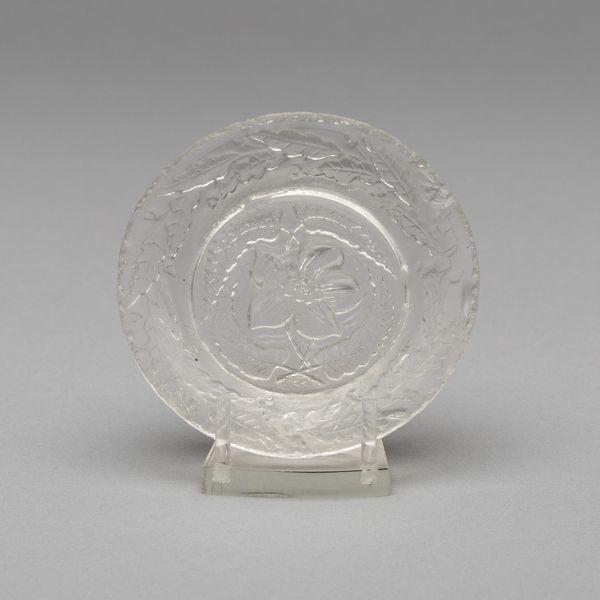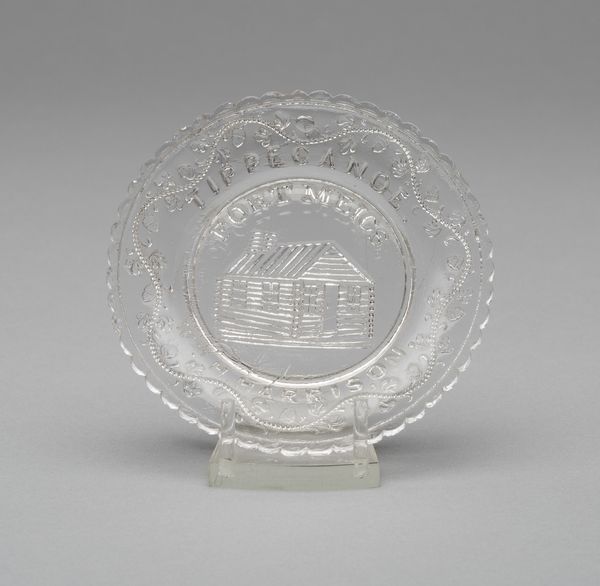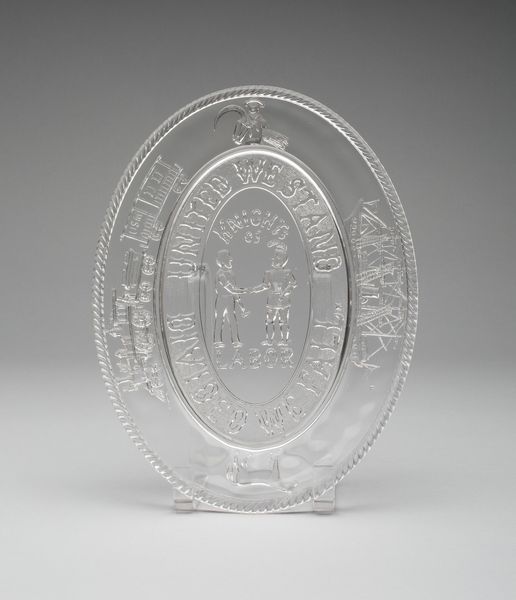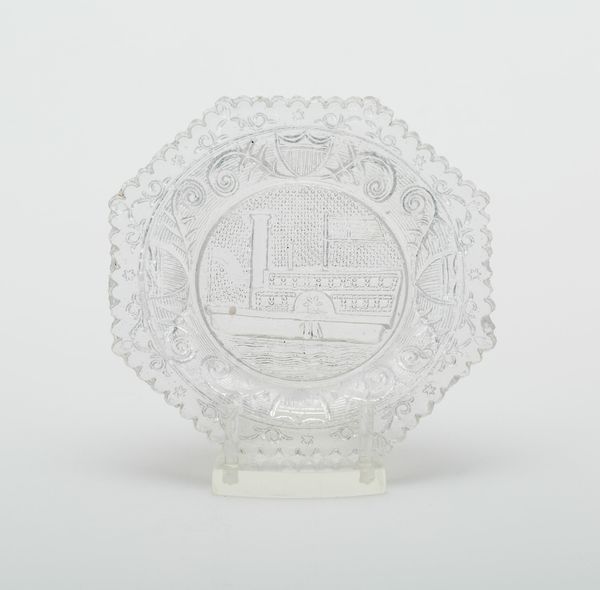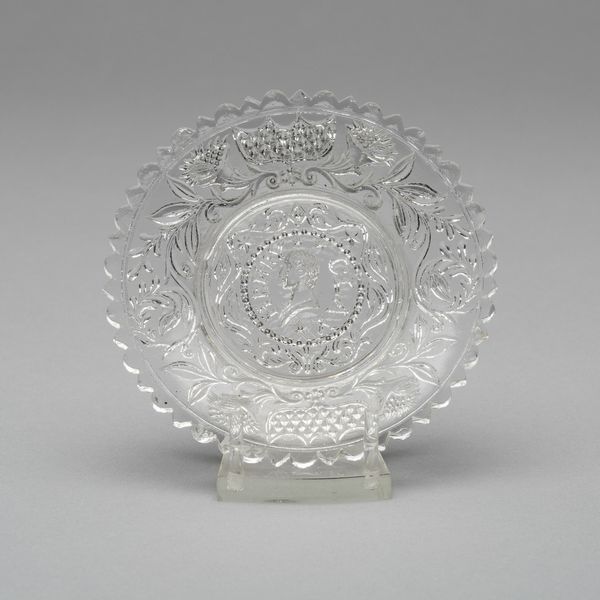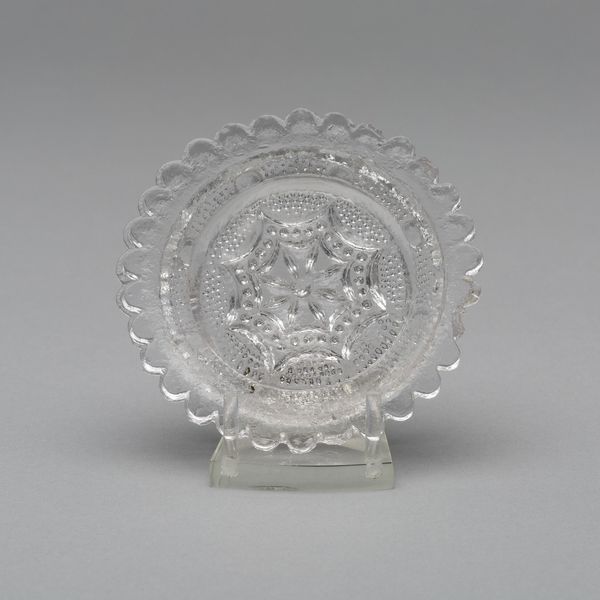
glass
#
portrait
#
glass
#
history-painting
#
decorative-art
#
miniature
Dimensions: diam. 8.7 cm (3 7/16 in.)
Copyright: Public Domain
Curator: Isn’t this “Cup Plate” fascinating? Crafted around 1841, it’s a compelling example of decorative glass. It’s currently held here at The Art Institute of Chicago. Editor: It strikes me as ghostly – almost like a photographic negative rendered in delicate relief. The translucence of the glass softens what might have been a very strong, perhaps even stern, presidential image. Curator: It depicts President William Henry Harrison. These plates weren’t meant for eating off; people would pour excess tea or coffee into them from their cups. Given Harrison's remarkably short presidency, dying of illness only a month after his inauguration, objects like these take on additional symbolic weight. They became memorial pieces, essentially. Editor: I'm interested in the formal echoes—the radial symmetry gives the whole plate a sense of dynamic stillness, while the inscription reinforces that sense of contained energy. Also, notice how the plate's transparency actually incorporates its environment into the overall visual effect. It ceases to be a discrete object. Curator: It's interesting to consider that Harrison was marketed as a common man, a war hero, yet his image ends up on decorative tableware often owned by those with a certain level of disposable income. Mass production democratized imagery but also situated it within a consumer culture that subtly altered its meaning. Editor: The choice of glass is ingenious, actually. It lends an almost ethereal quality to a man who died in office – fragile, transient…it also feels incredibly American. The cut-glass sparkles with an almost blinding refractive intensity, befitting an age of expansion and ambition. Curator: Yes, and such objects acted as touchstones—domestic symbols linking citizens to national narratives and ideals. Their popularity demonstrates the desire to memorialize political figures within the everyday space of the home. Editor: I suppose it is like holding history in your hand, or under your tea cup at least. Curator: Indeed. Examining it closely offers such a valuable material glimpse into the ways early Americans literally consumed their history. Editor: The plate becomes, then, a lens through which we can understand their ambitions and anxieties. A ghost in the glass, reflecting more than light.
Comments
No comments
Be the first to comment and join the conversation on the ultimate creative platform.

